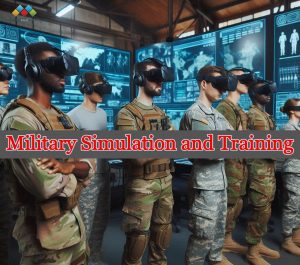The Global Military Simulation and Training Market is projected to grow from $9.2 billion in 2022 to $12.2 billion by 2027, at a CAGR of 5.6%, according to a research report by MarketsandMarkets. This growth is driven by increasing defense spending, advancements in display technologies, and rising geopolitical tensions, particularly in Asia.

Key Market Segments and Growth Drivers
Platform Insights:
Land Segment: Expected to grow at the highest CAGR of 6.2%, driven by the modernization of military fleets and the induction of new vehicle platforms, creating demand for simulation-based training.
Download PDF Brochure @
https://www.marketsandmarkets.com/pdfdownloadNew.asp?id=661
Aviation Segment: Anticipated to hold the largest market share due to the high complexity and risks associated with military aircraft operations, necessitating extensive simulator-based training.
Regional Insights:
North America: Predicted to dominate the market, fueled by rising orders to replace old navy fleets and increased demand for trained military personnel. The presence of leading manufacturers like Lockheed Martin, Northrop Grumman, L3Harris Technologies, and Raytheon Technologies also contributes to regional growth.
Technological and Market Trends
Simulation Technologies: The adoption of live, virtual, and constructive simulation types enhances training efficiency and realism, supporting diverse military applications across land, maritime, and airborne platforms.
Synthetic and Gaming Environments: These environments provide immersive training experiences, improving the preparedness and operational capabilities of military personnel.
Unmanned Systems: Increased use of UAVs and other unmanned systems in military operations drives the need for specialized simulation training to manage these advanced technologies.
Ask for Sample Report @
https://www.marketsandmarkets.com/requestsampleNew.asp?id=661
Market Challenges
Despite the promising growth, the market faces challenges such as high R&D costs and stringent regulatory norms, which may impact the pace of technological advancements and market adoption.
